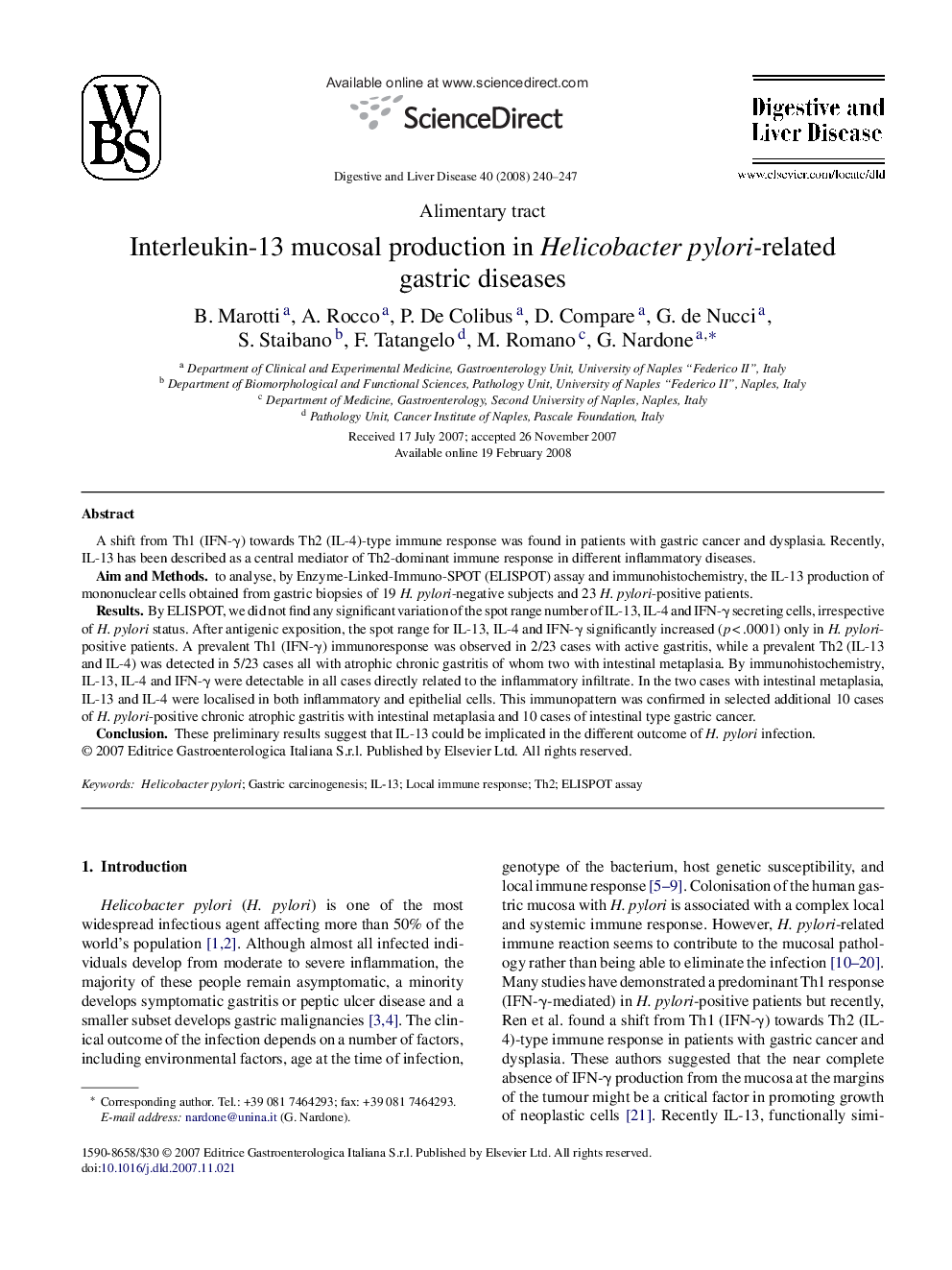| Article ID | Journal | Published Year | Pages | File Type |
|---|---|---|---|---|
| 3266157 | Digestive and Liver Disease | 2008 | 8 Pages |
A shift from Th1 (IFN-γ) towards Th2 (IL-4)-type immune response was found in patients with gastric cancer and dysplasia. Recently, IL-13 has been described as a central mediator of Th2-dominant immune response in different inflammatory diseases.Aim and Methodsto analyse, by Enzyme-Linked-Immuno-SPOT (ELISPOT) assay and immunohistochemistry, the IL-13 production of mononuclear cells obtained from gastric biopsies of 19 H. pylori-negative subjects and 23 H. pylori-positive patients.ResultsBy ELISPOT, we did not find any significant variation of the spot range number of IL-13, IL-4 and IFN-γ secreting cells, irrespective of H. pylori status. After antigenic exposition, the spot range for IL-13, IL-4 and IFN-γ significantly increased (p < .0001) only in H. pylori-positive patients. A prevalent Th1 (IFN-γ) immunoresponse was observed in 2/23 cases with active gastritis, while a prevalent Th2 (IL-13 and IL-4) was detected in 5/23 cases all with atrophic chronic gastritis of whom two with intestinal metaplasia. By immunohistochemistry, IL-13, IL-4 and IFN-γ were detectable in all cases directly related to the inflammatory infiltrate. In the two cases with intestinal metaplasia, IL-13 and IL-4 were localised in both inflammatory and epithelial cells. This immunopattern was confirmed in selected additional 10 cases of H. pylori-positive chronic atrophic gastritis with intestinal metaplasia and 10 cases of intestinal type gastric cancer.ConclusionThese preliminary results suggest that IL-13 could be implicated in the different outcome of H. pylori infection.
